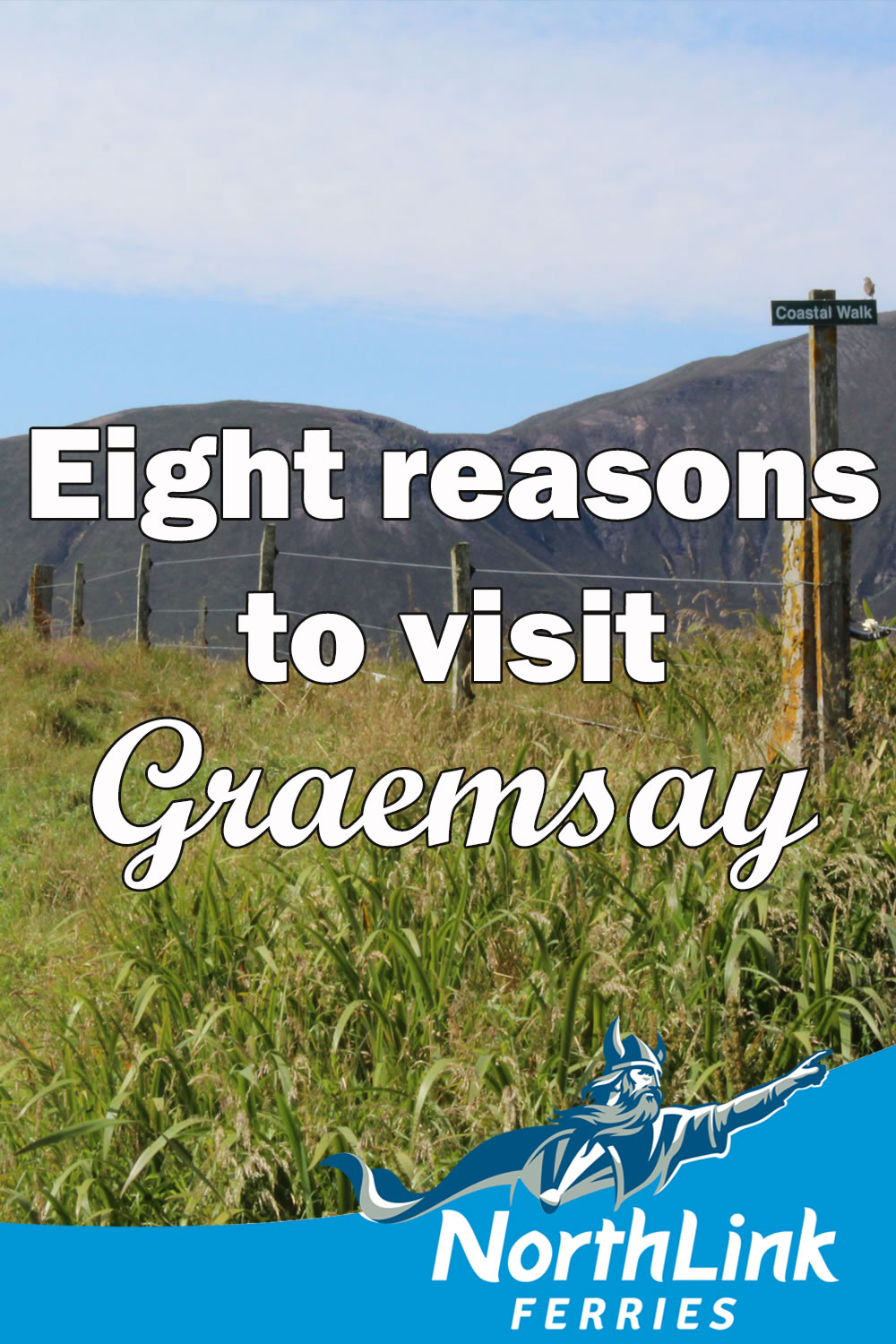Eight reasons to visit Graemsay
One Monday in August I decided to visit the island of Graemsay. This green teardrop of an island sits just 2 miles from Stromness in Orkney. Though I have lived within sight of Graemsay almost every day of my life, to my great shame, I had never visited its shores before.
Whilst exploring near the lighthouse, I looked for glass glinting on the shore. I had read that pieces of discarded lighthouse lens could sometimes be found, washed up from ‘relaxed’ disposal in years gone by.
The reason might have been the common misconception that there isn’t much to see on Graemsay. Indeed, it is a stark contrast to the busy harbour town to the north and the dark hilly island of Hoy to the south. However, Graemsay has charms of its own, and I found myself falling in love with the island very quickly.
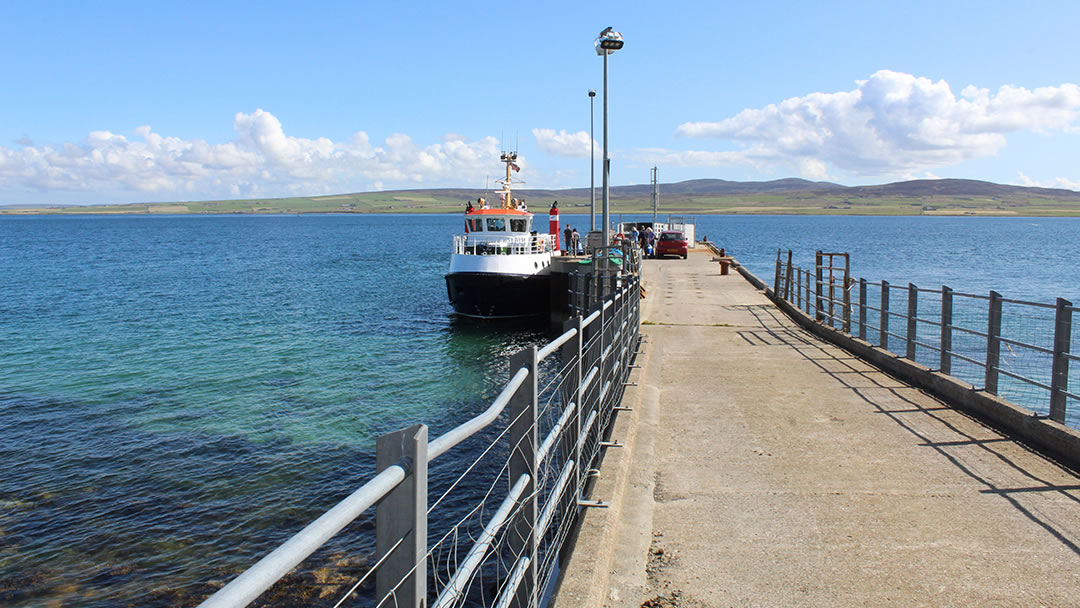
Getting there is easy. I took the foot passenger ferry to Hoy, and there are frequent stops in Graemsay on the timetable. Despite staying on the island for most of the day, I only saw a fraction of all there is to see. I returned home invigorated and happy, with a sunburnt neck that still makes me yelp if touched by mistake! I’m already planning my next trip over.
We thought we’d detail eight reasons why you should add Graemsay to your list of Orkney islands to visit!
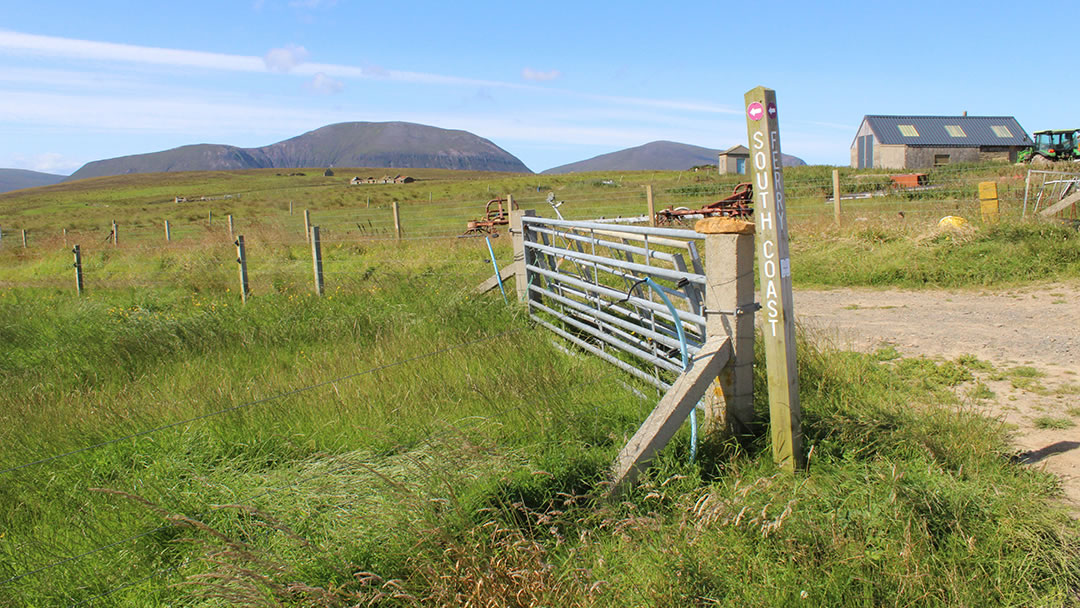
1) A peaceful coastal walk
Though there are roads into the interior of the island, I decided to take a coastal route clockwise around Graemsay. To do this, I followed the road for a third of a mile and then followed a sign pointing towards the coast. In all the coastal route is about 6 miles long.
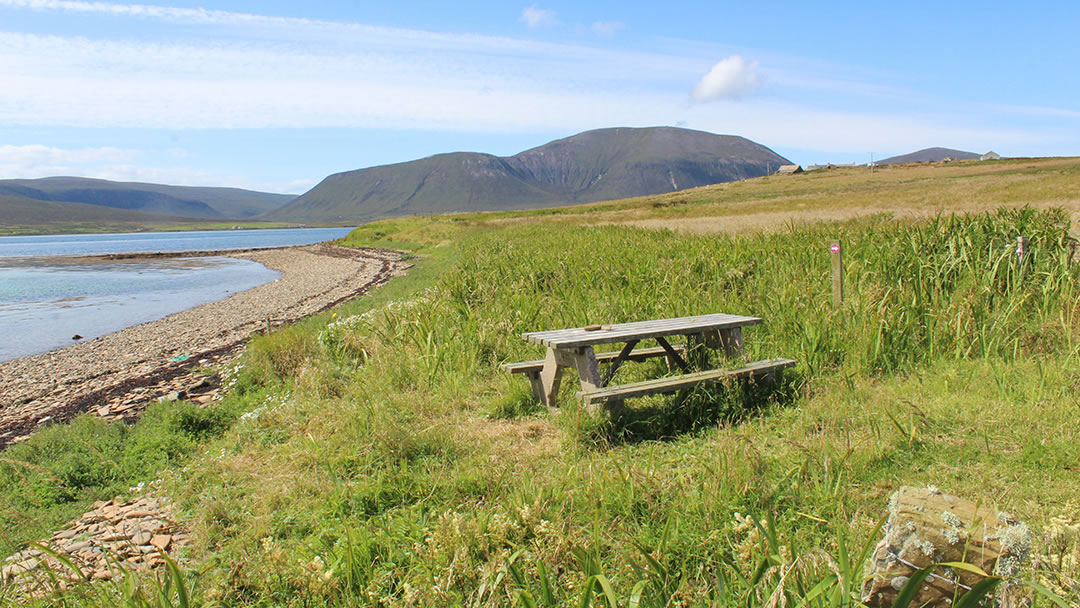
Much of the route is well trodden, on the grass above the shore. However, it is a rough track too, and I found myself stumbling on several occasions. Very often it was easier to walk along the shore and climb back to the path when needed.
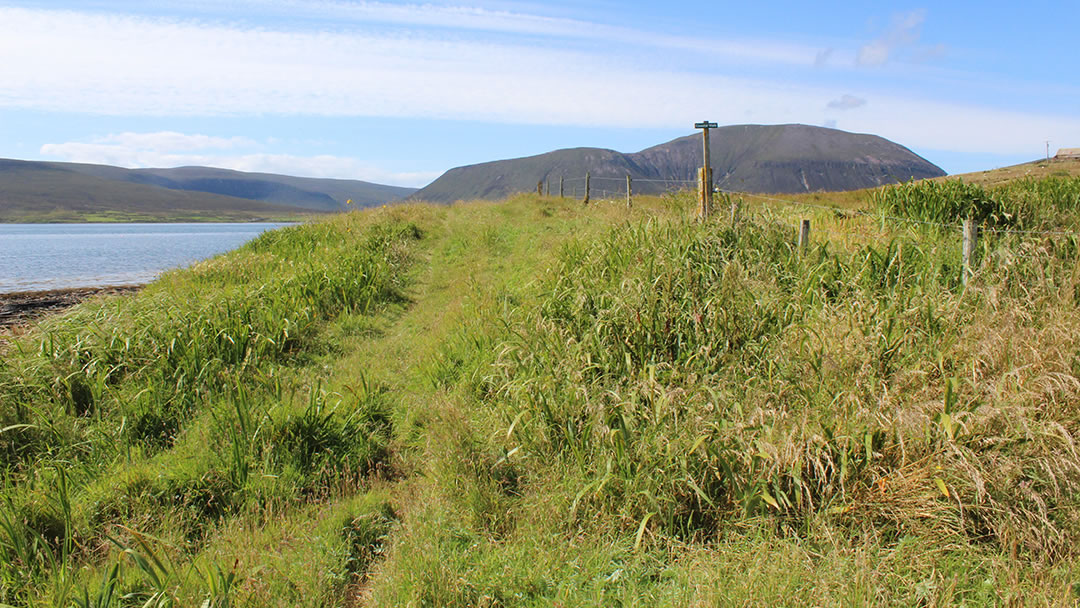
Graemsay’s interior is green farmland mixed in with moorland. However, the coast is where the island is at its prettiest. Along the south coast there was a beautiful view of Hoy and in the water between the island (called Burra Sound), small boats puttered here and there.
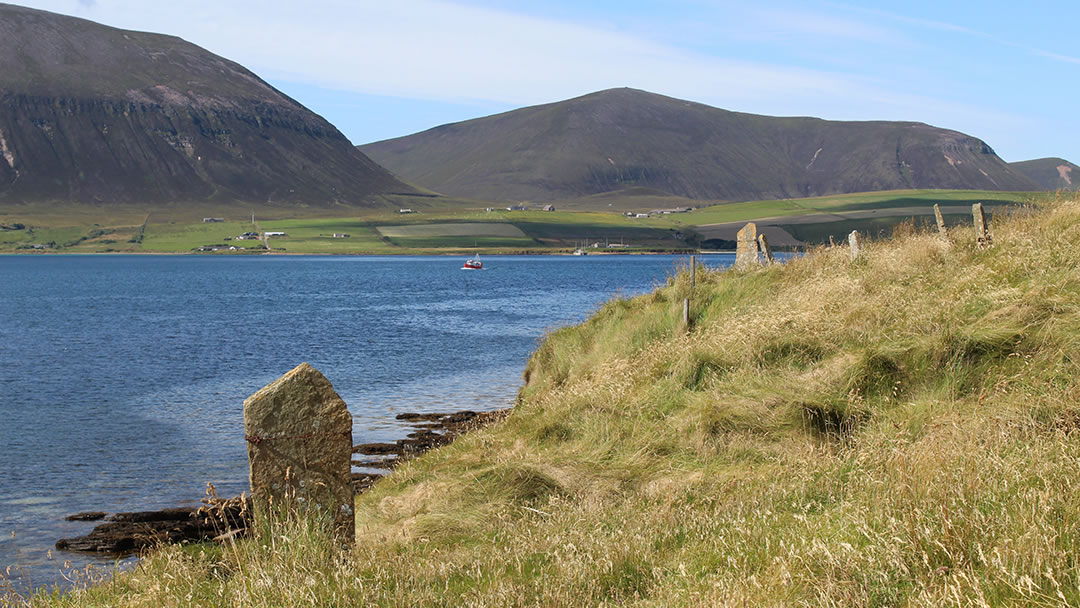
I found the Old Kirk, which was built in 1867 when Graemsay had a larger population. It’s roof is now open to the stars.
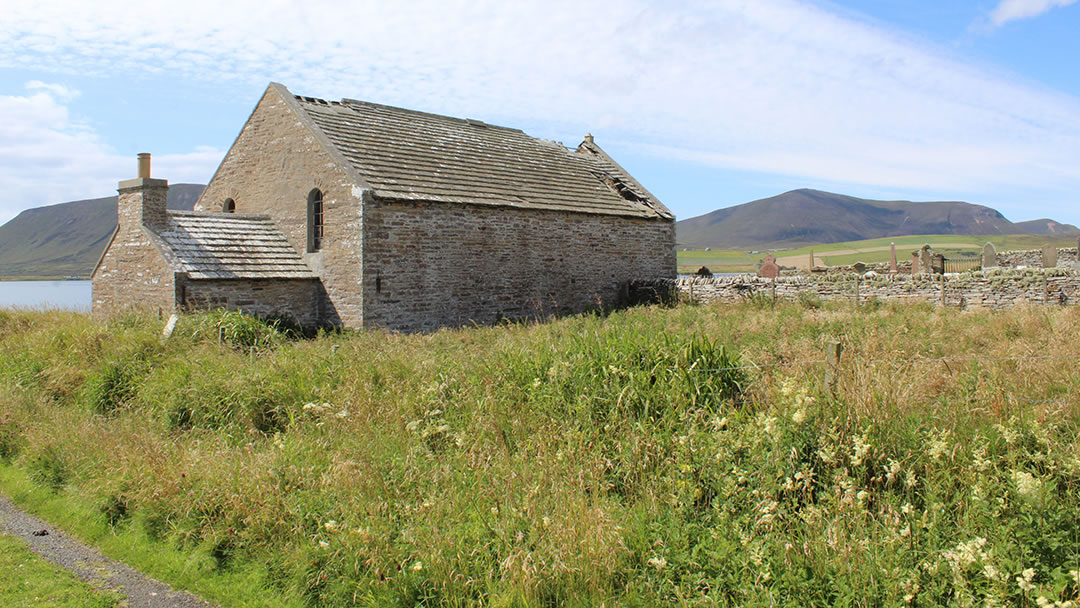
2) Graemsay allows you to get close with nature
The tranquillity of Graemsay means that the island’s wildlife is undisturbed. On the sunny day that I landed, I found a dazzling variety of wildflowers, and as I swept through the long grass, a snowstorm of moths fluttered into the air.
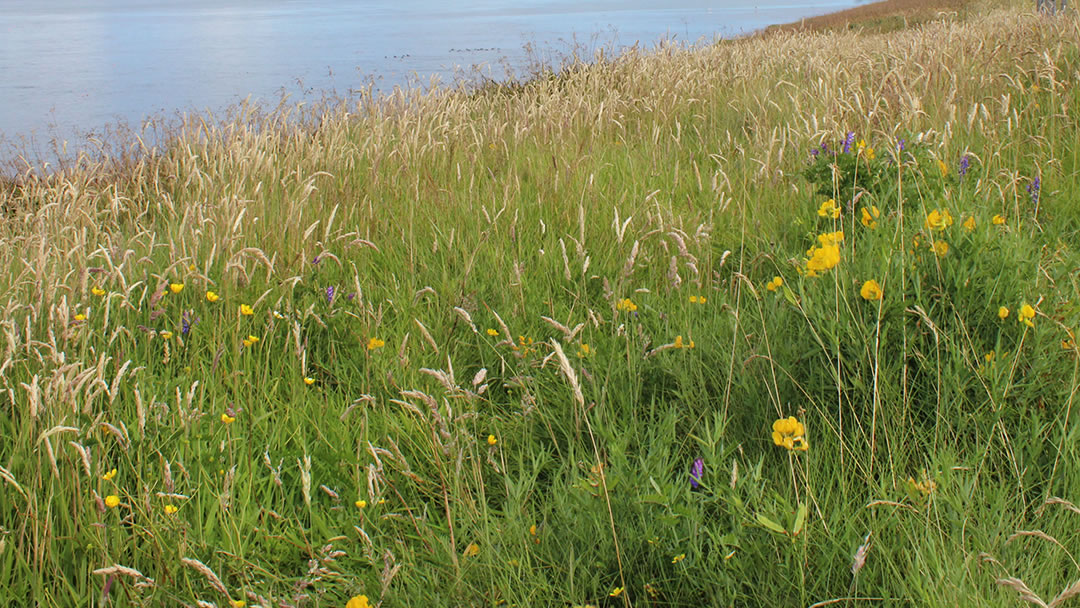
Just under the Old Kirk I encountered a juvenile oystercatcher, who scolded me for coming close. He pipped furiously and flew in circles. He was smaller than a normal oystercatcher, with a lovely tawny colour where his feathers would eventually be black.
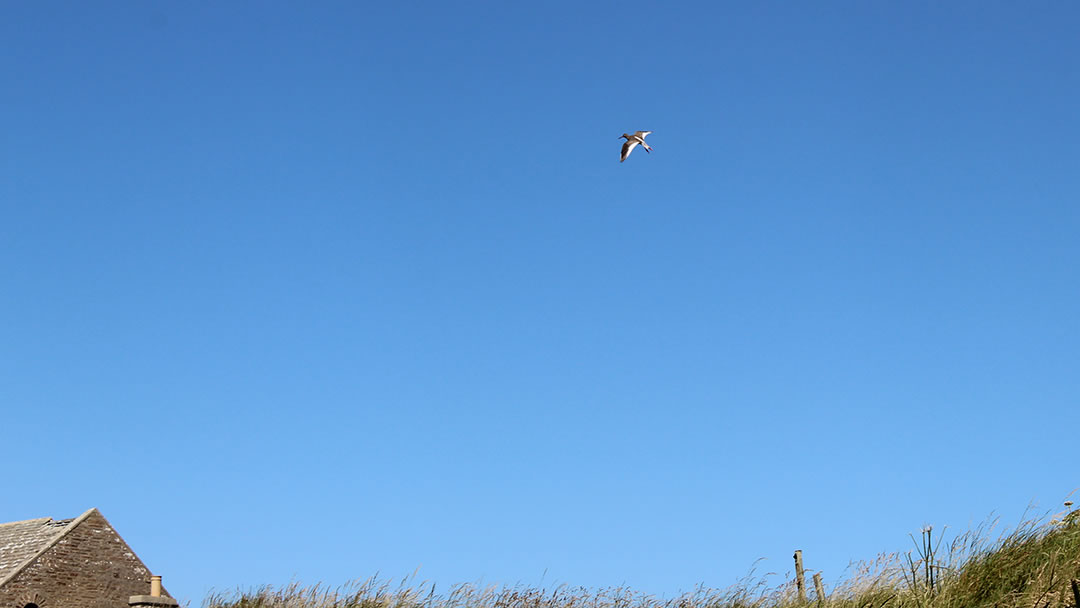
As the coastal path veered towards the west side of the island, I spotted the biggest scarfie I’ve ever seen. King scarfie looked as big as a penguin next to the rest of his family.
On the west coast the wind was that bit stronger, and the waves washed in with more force. It was here that I became acutely aware that Graemsay is an island sitting in strong tidal currents between Stromness and Hoy.
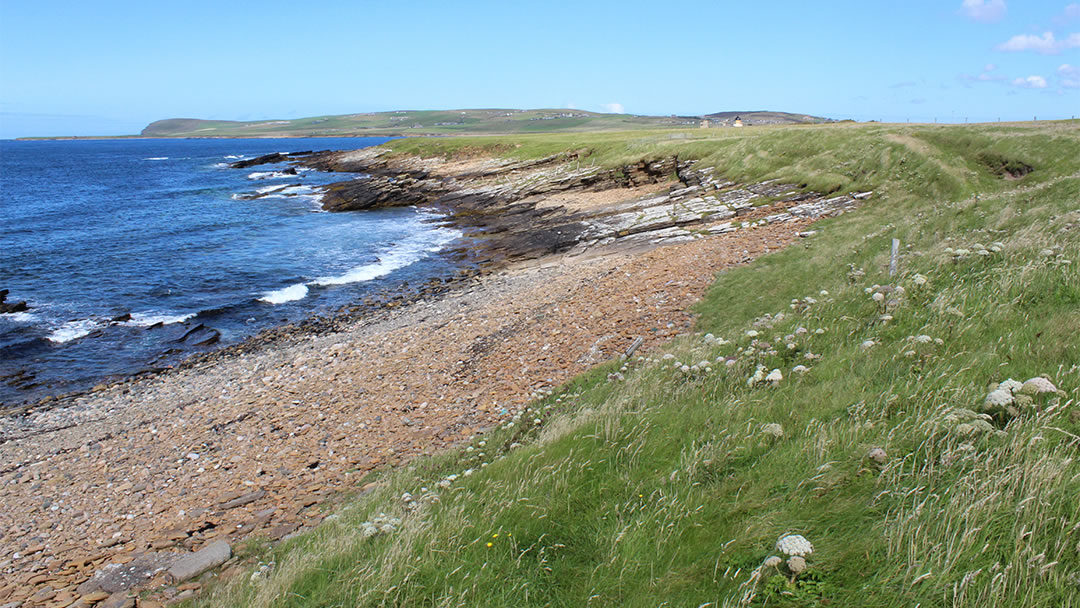
I continued walking, quickly approaching Hoy Low Lighthouse and the northwest corner of Graemsay. The light sandstone rocks changed suddenly to the same hard granite found on Brinkie’s Brae in Stromness.
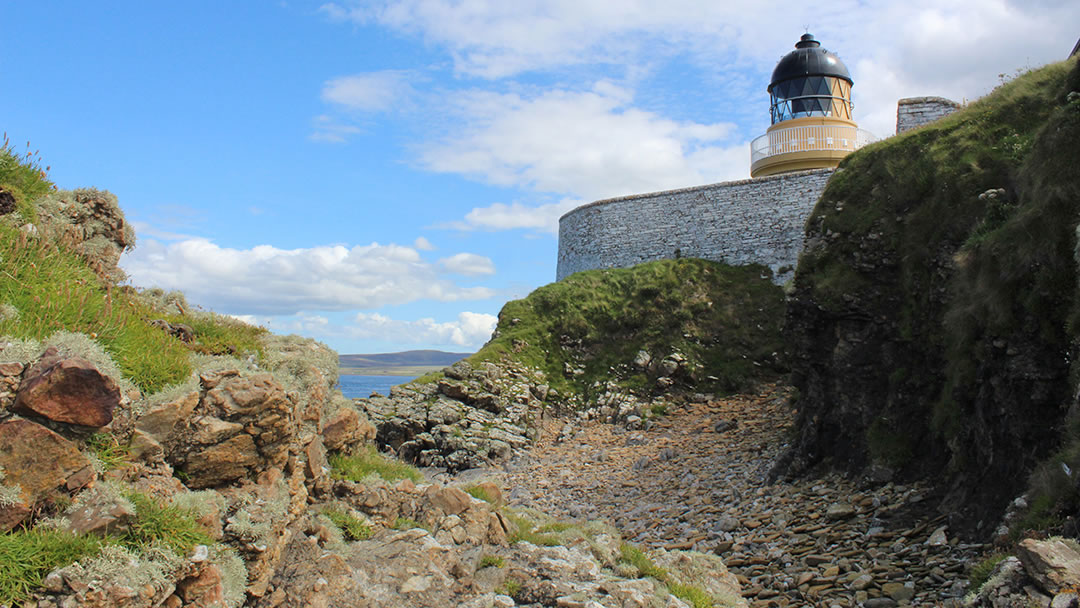
3) Graemsay has amazing lighthouses
One of my principal reasons for visiting Graemsay was to see the two lighthouses. Hoy Low lighthouse is only 12m high but can be easily seen in the bright blue of Hoy Sound.
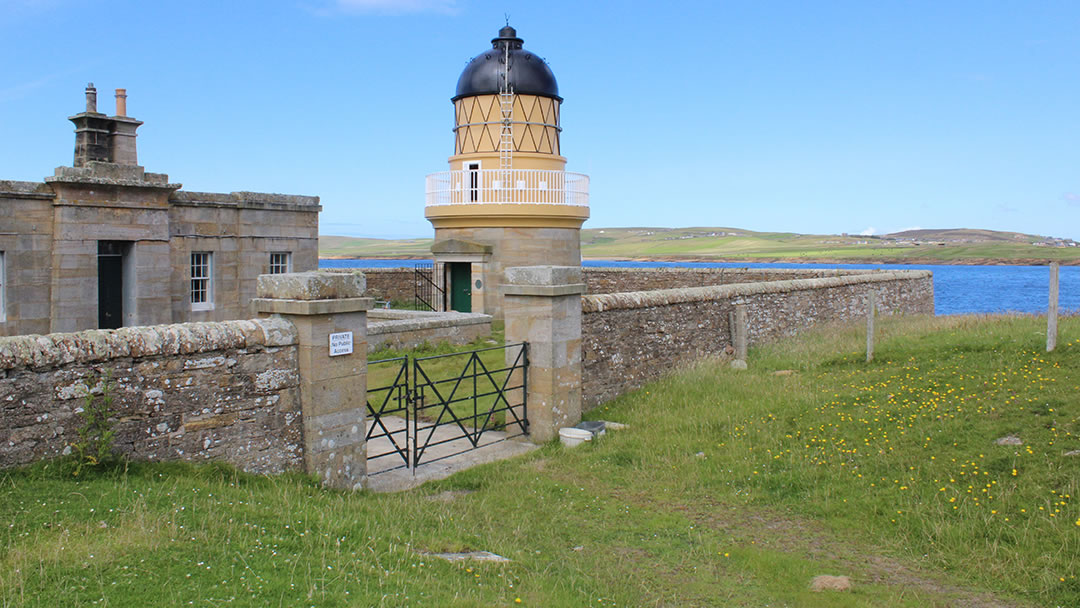
On the other end of the island, close to the ferry pier, Hoy High lighthouse is taller, with a 34m high tower.
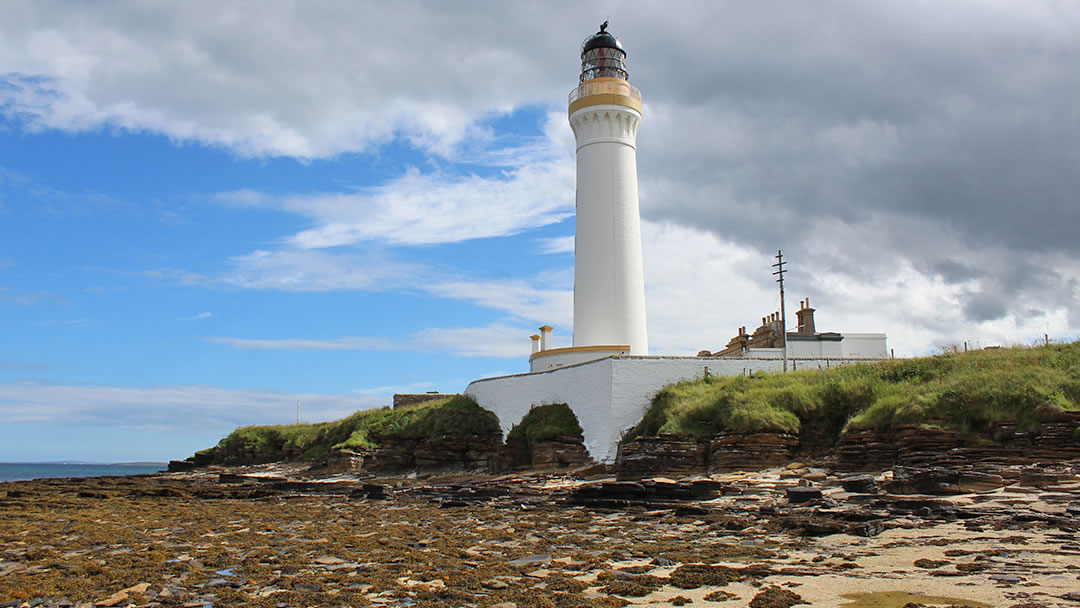
For ships, lining up the two lighthouses, so that the light of Hoy High appears directly above that of Hoy Low, would ensure safe passage through Hoy Sound. In the old days, Graemsay’s fast tides and hidden skerries were hazardous to shipping.
On 1st January 1866 the Albion, bound for New York, was wrecked on Graemsay and 11 lives were lost. This incident led to Stromness’ first lifeboat entering service the following year.
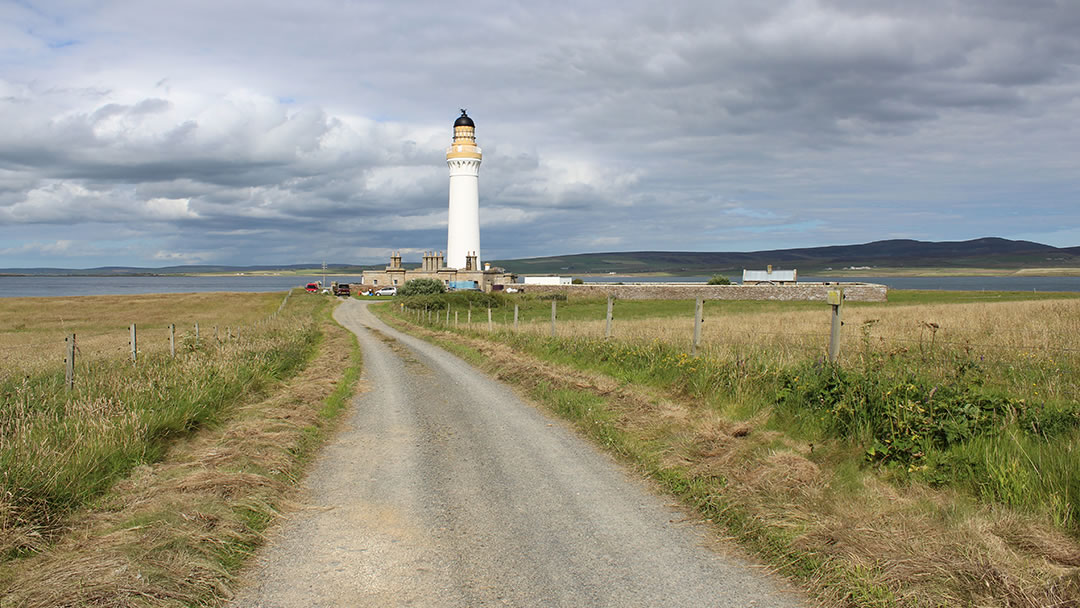
Both lighthouses are now automated, and their accommodation blocks are now private properties. In the past, Graemsay, with its school and close proximity to Stromness, was a coveted posting for lighthouse families.
Whilst exploring near the lighthouse, I looked for glass glinting on the shore. I had read that pieces of discarded lighthouse lens could sometimes be found, washed up from ‘relaxed’ disposal in years gone by. Alas no such treasures were spotted!
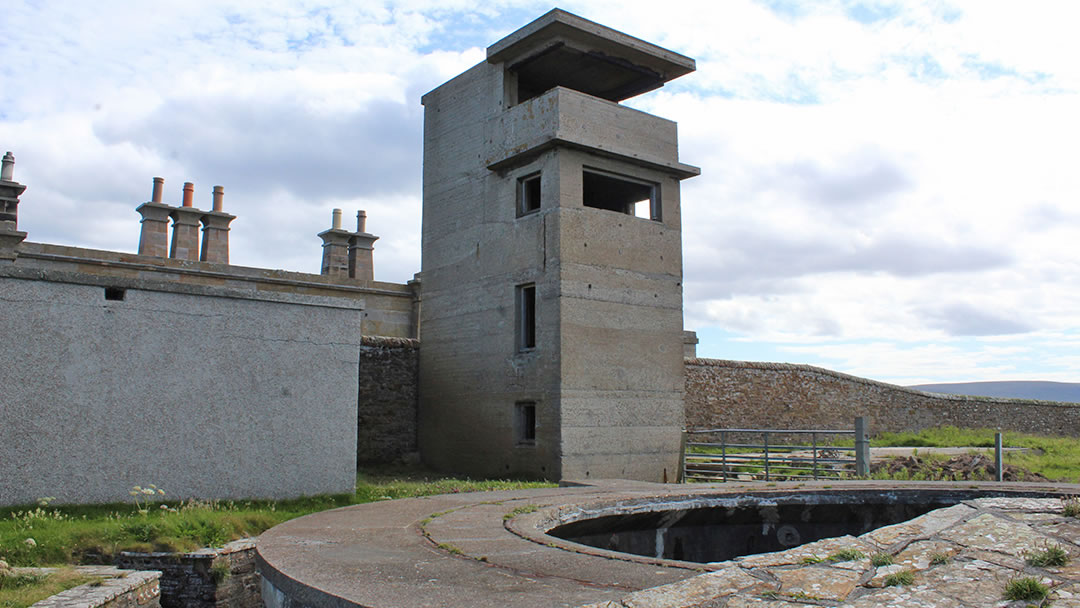
4) Discover a compelling wartime story
During the Second World War the British Navy used Scapa Flow as a harbour, so gun batteries were set up at Ness, Stromness, and Hoy to protect the western entrance.
Late in the war, in December 1943, another coastal battery was built, this time on Graemsay, next to Hoy Low lighthouse. It had a watch tower, searchlights, a magazine, and a twin 6-pound gun emplacement. The Graemsay Battery received directions from Ness Battery close to Stromness.
Any enemies that entered Hoy Sound would have been hit from all sides by powerful guns that could easily blast open the side of a ship.
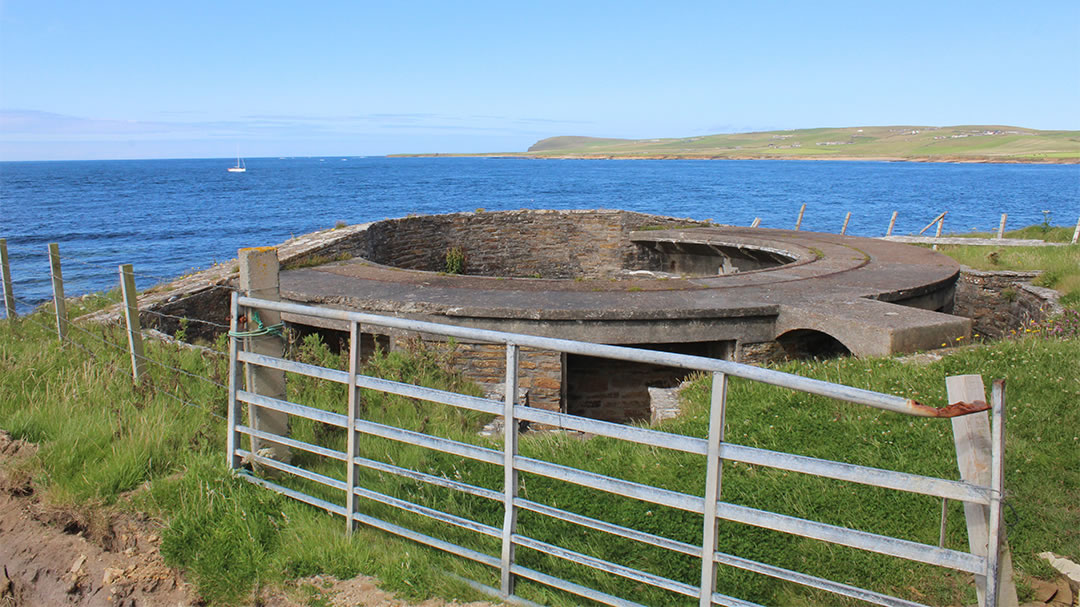
These days the twin 6-pound gun is gone, but the circle of concrete that it rotated on is still there. The watch tower is still standing but has no stairs. I could only imagine what the wonderful seaward view must be like from the top.
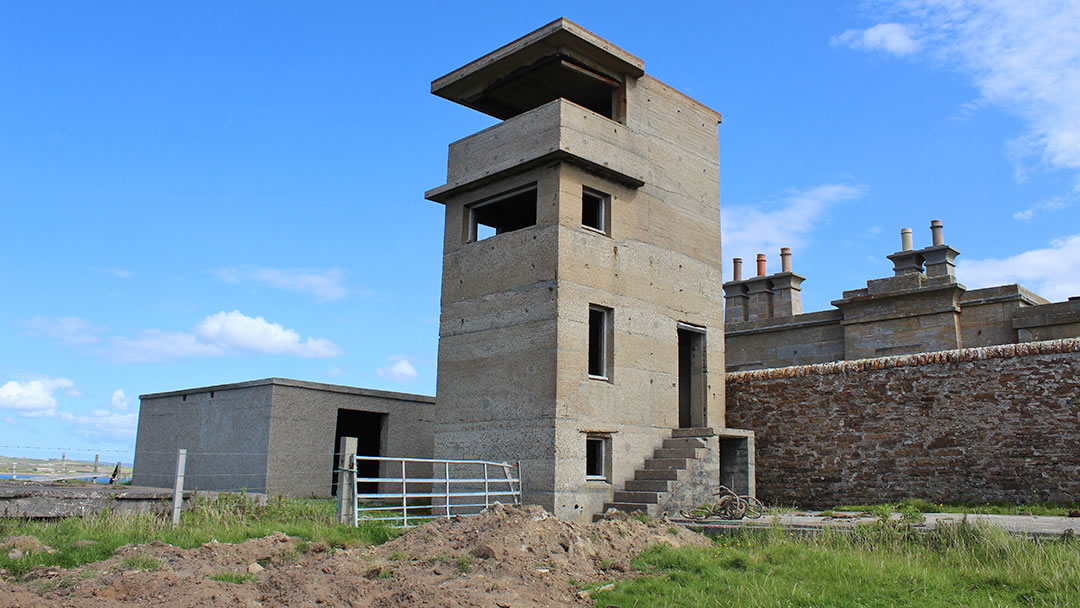
5) See familiar sights from a different perspective
As the coastal path continued along the north side of Graemsay, arctic terns swooped and dived. This side of Graemsay faces Stromness’ west shore. This is another reason to visit Graemsay. For those familiar with Orkney, the unique views from the island are to be savoured. I loved seeing Hoy so close.
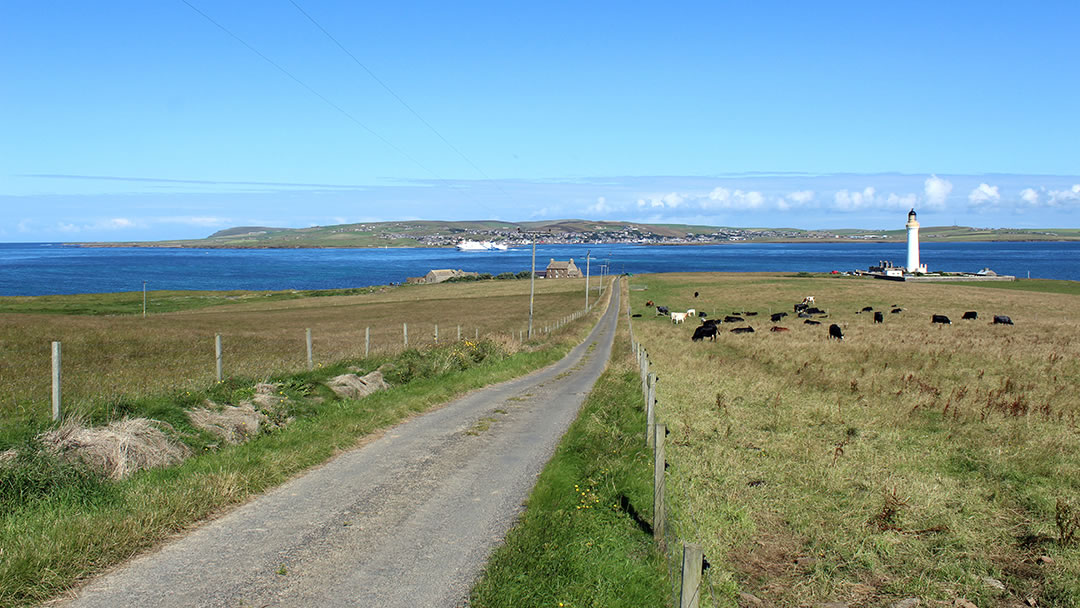
I had enjoyed seeing MV Hamnavoe leaving Stromness earlier in the morning from a hillside on Graemsay.
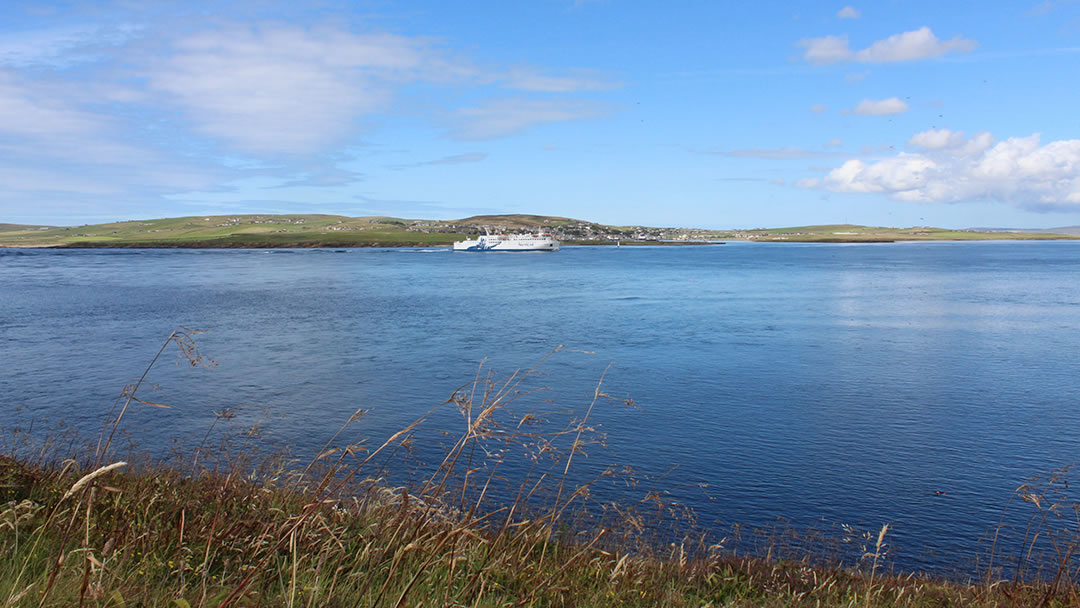
In the afternoon, during my walk around Graemsay’s coast, I watched her return, sailing though the glistening sea, back into Stromness.
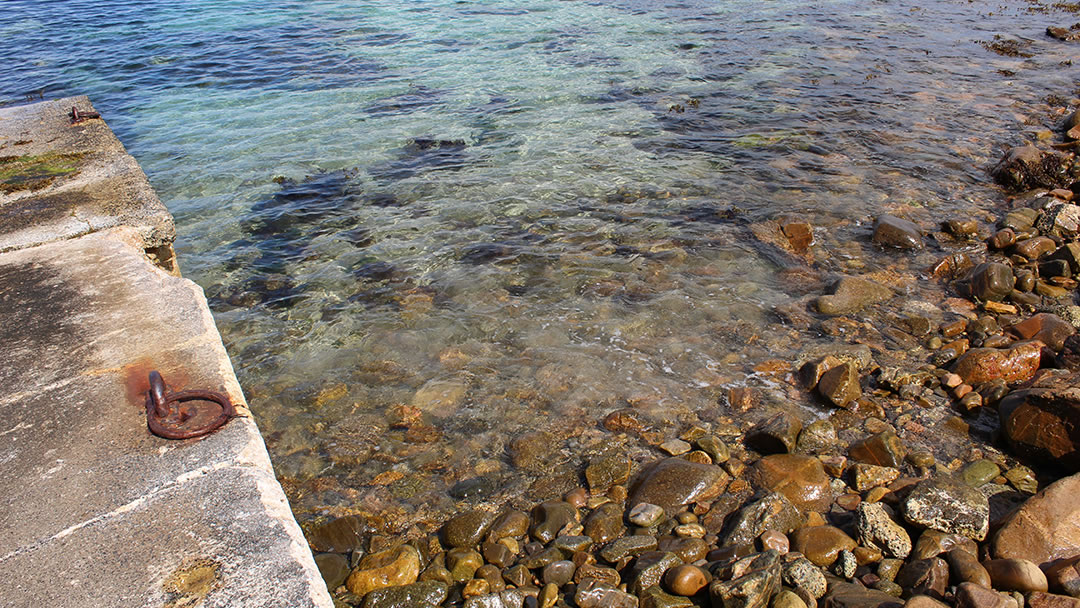
6) Graemsay has picturesque old piers
I continued walking along the north shore and it was a constant surprise. The rocky landscape seemed to tumble into the sea, and at times the water around Graemsay appears turquoise and tropical.
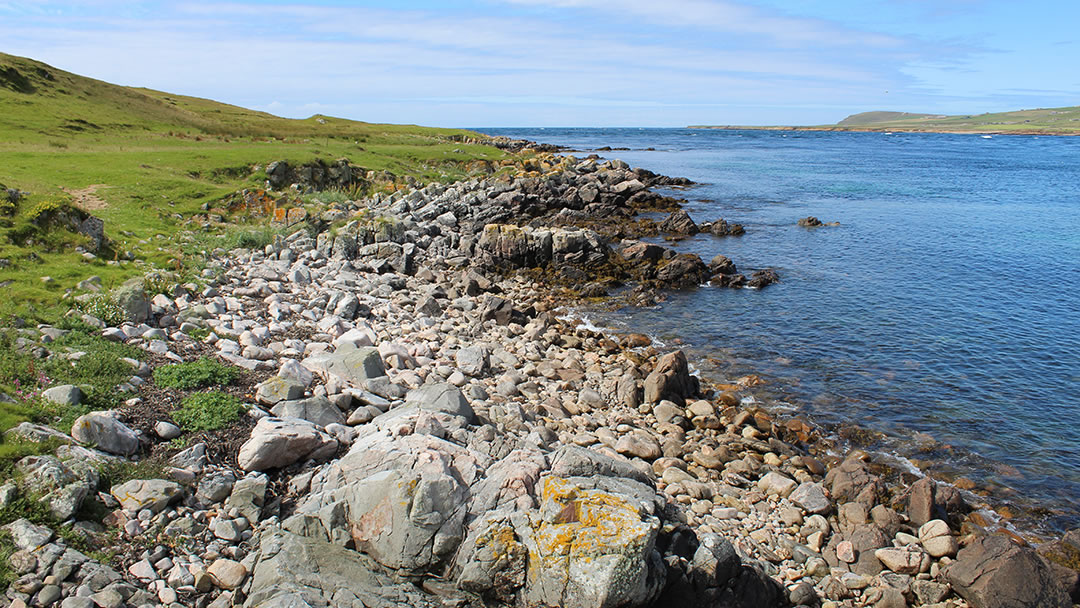
Then I discovered a little concrete pier with water lapping against it.
All along Graemsay’s shore there are picturesque old boat nousts and sheds. This pier was a bit newer though. It was called Cooper’s Noust and it was built in 1938, tucked away on the rocky shore.
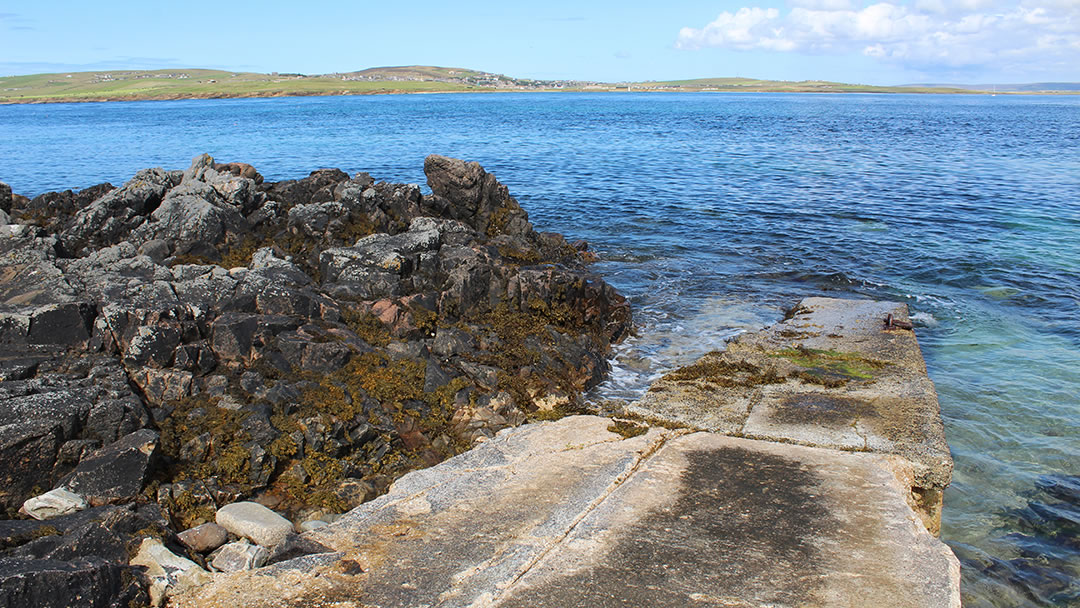
Some of it has washed away, and the hoops for tying up boats are now rusted and immovable. However, the pier was once used for landing farming supplies and in emergencies by the doctor from Stromness.
There’s another fine old pier near Hoy High lighthouse, but I had to cross secluded Sandside Bay first.
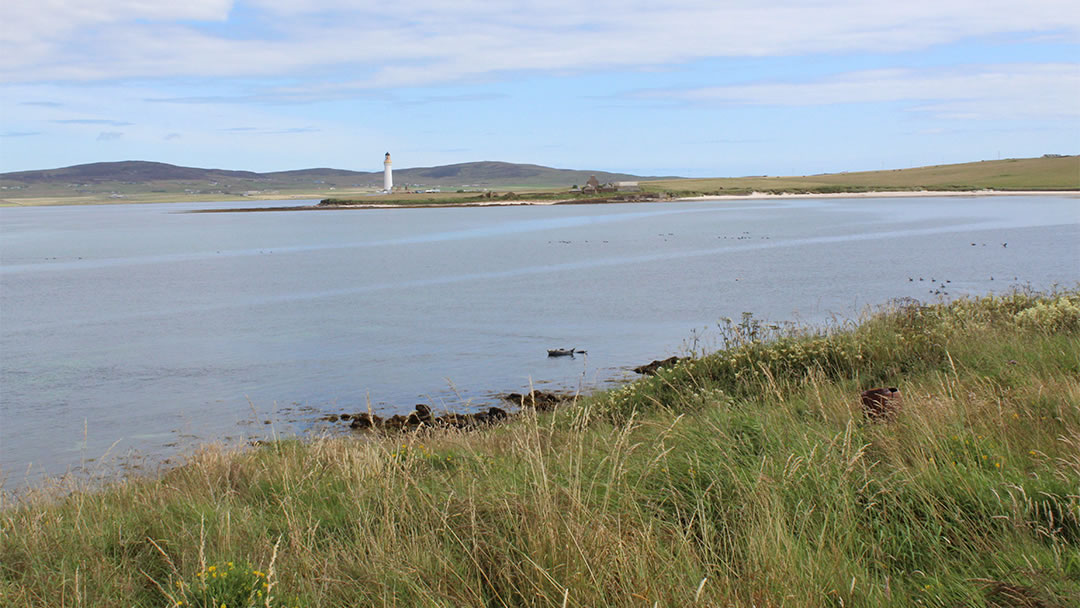
7) There are beautiful beaches on the island
The rock-strewn south coast of the island had been a sun trap, and the time spent here was the cause of my sunburnt neck.
As the coastal path reached Sandside Bay on the north side of Graemsay, I found it to be particularly lovely also. It is sheltered from south-westerly winds and covered with an arc of fine sand.
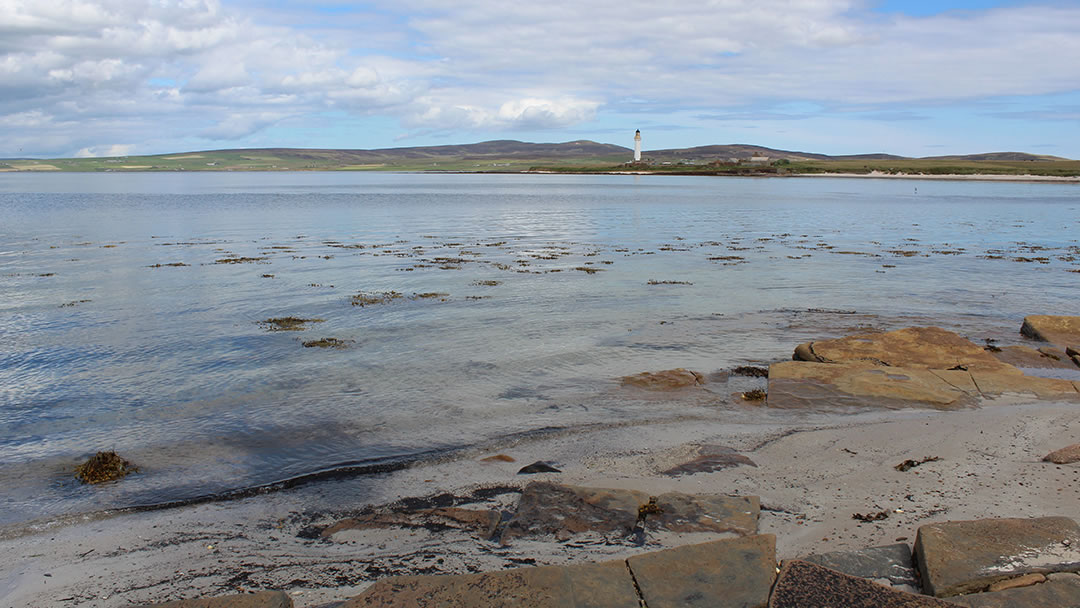
Sandside bay it seemed, was a popular holiday resort for birds. Many of them took to the water upon seeing me on the track above the beach. A group of seals remained oblivious for a time, and then hammered into the water.
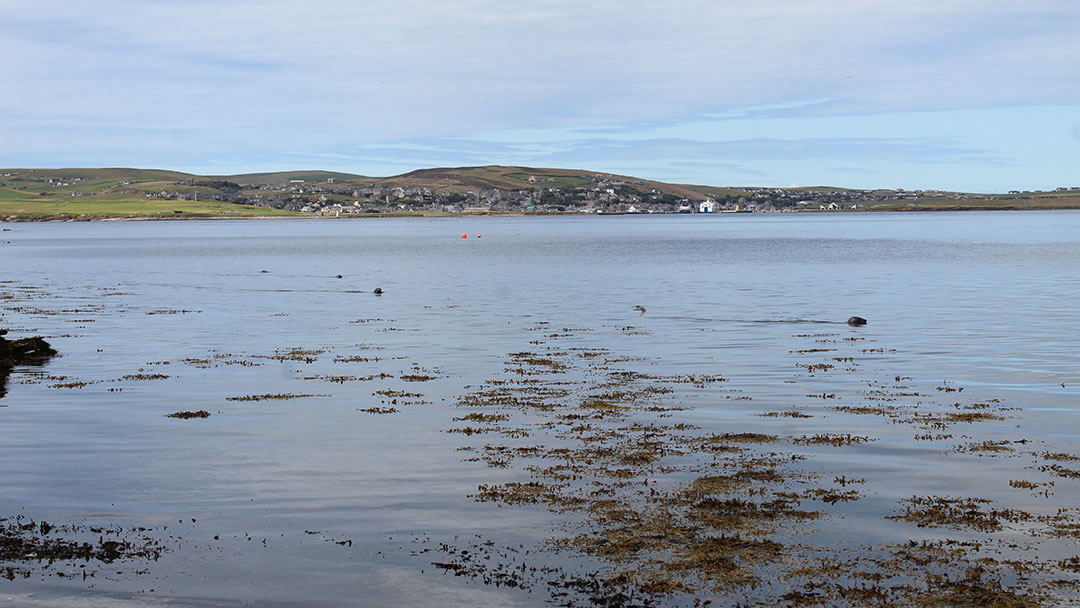
It was shortly after this that I stumbled and rolled in the grass. This tumble must have amused the seals. Is it not the case that we humans are supposed to be nimble on land? After that, four heads glided through the water, following me as I made my way along the shore.
Sandside is backed by a sand dune, and I really liked how sand from the dune spilled onto the island’s roads.
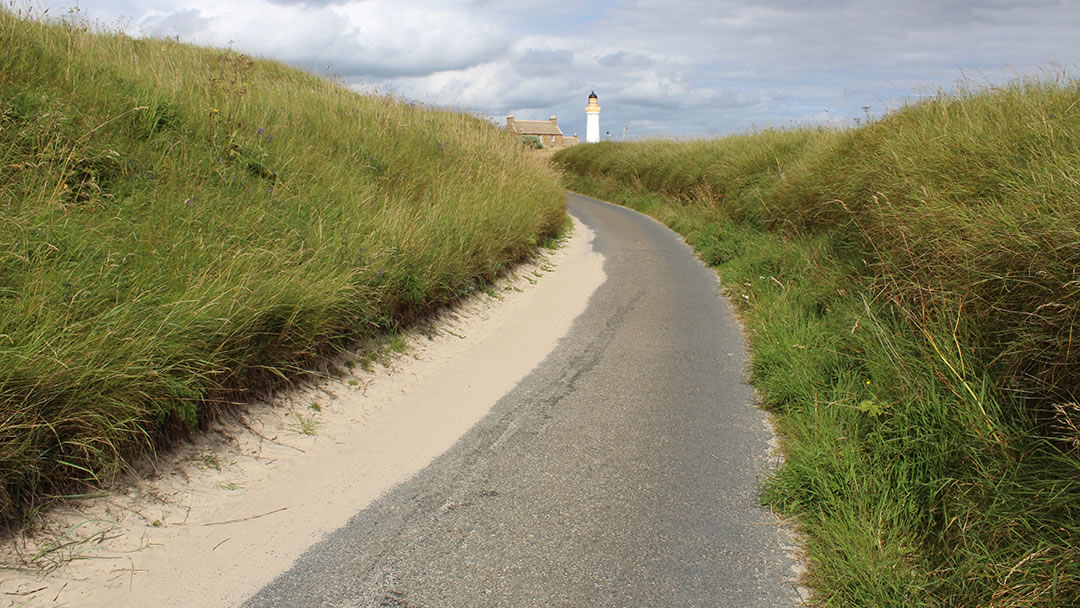
At the eastern end of Sandside Bay, close to Hoy High lighthouse, there is an old pier. It was built to land blocks for the construction of the lighthouses.
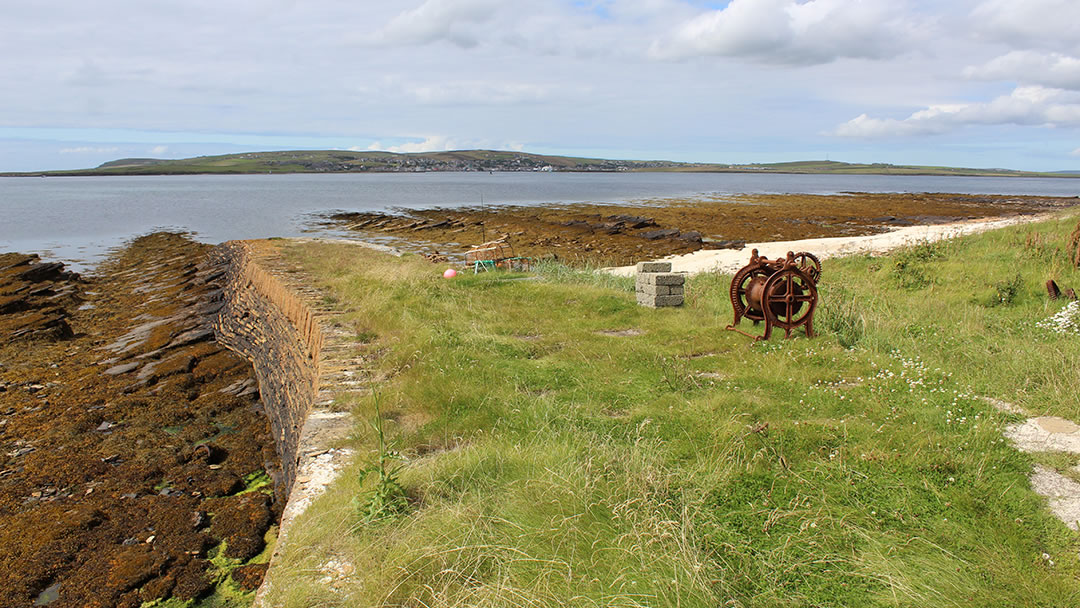
Beside the Sandside pier there was a wealth of seashells, including quite a few groatie buckies!
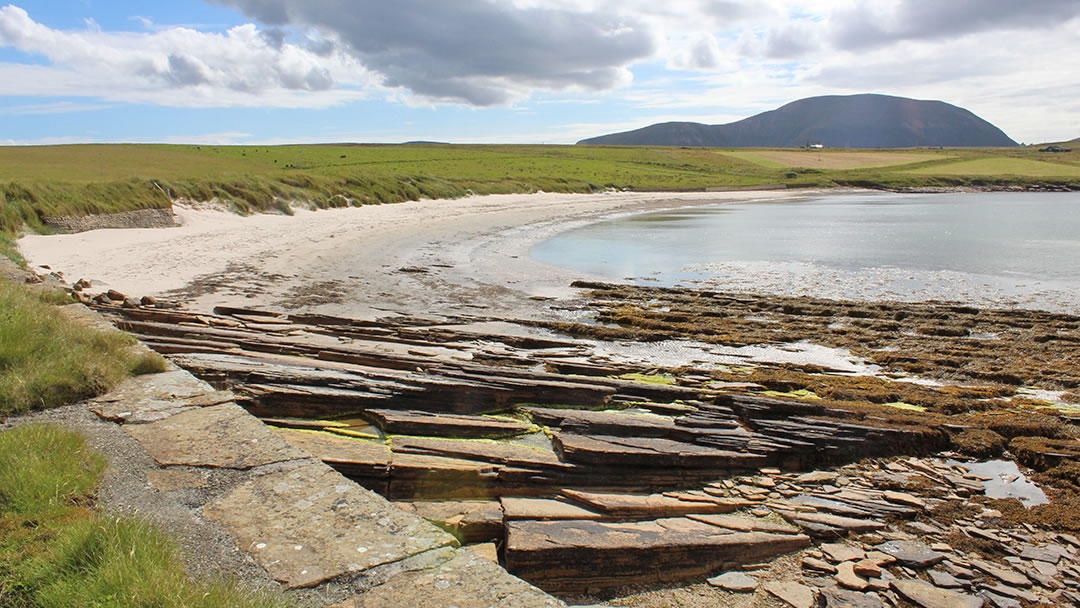
The sand here was crunchy because it is made of the crushed fragments of maerl. This is a purple-pink, hard seaweed found nearby under the water. In the past, maerl was used as fertiliser.
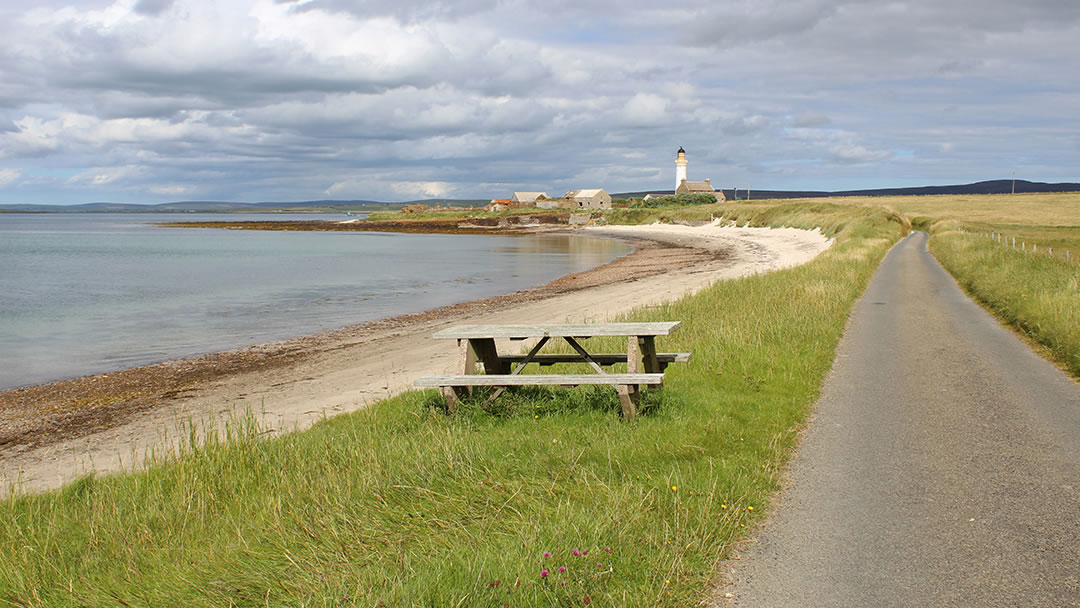
8) Graemsay has a friendly community and is a great place to escape the crowds!
Above Sandside Bay, and elsewhere around the island, there were picnic tables for visitors to stop at. This made Graemsay seem like a welcoming and friendly place.
In the 19th century, 200 people lived in 36 crofts on Graemsay, but the number of residents has reduced now to 20. Graemsay is one of Orkney smallest inhabited islands and there is no shop or town. The community is a farming one and houses on the island are spread out, separated by long roads and green fields.
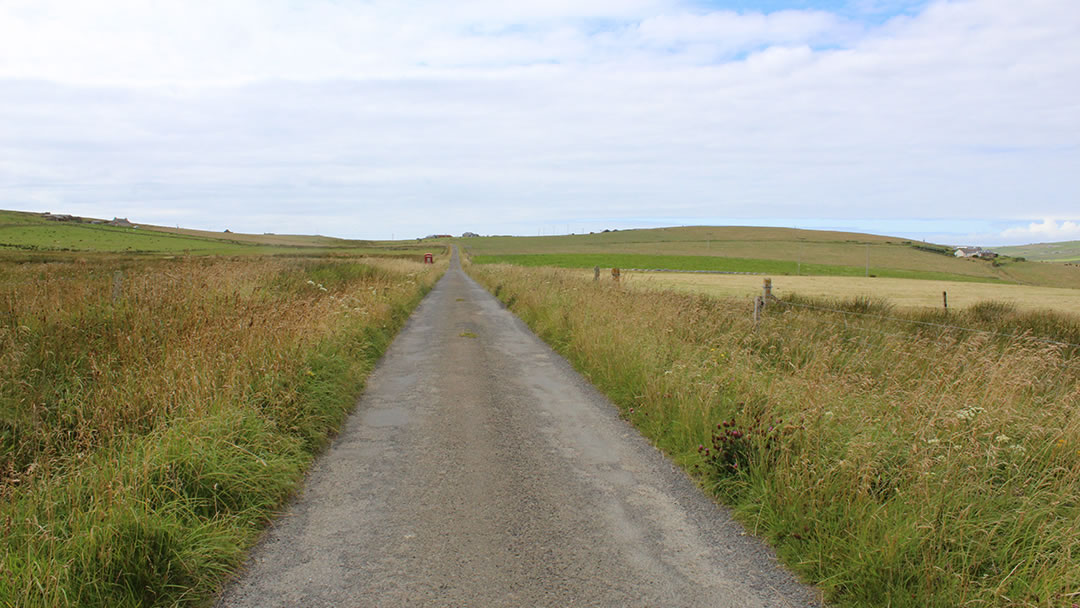
I only had a few glimpses of islanders during my day on Graemsay. When I stepped off the ferry, I met a few smiling folk waiting for deliveries from Stromness. During my walk I spotted a tractor working in a field.
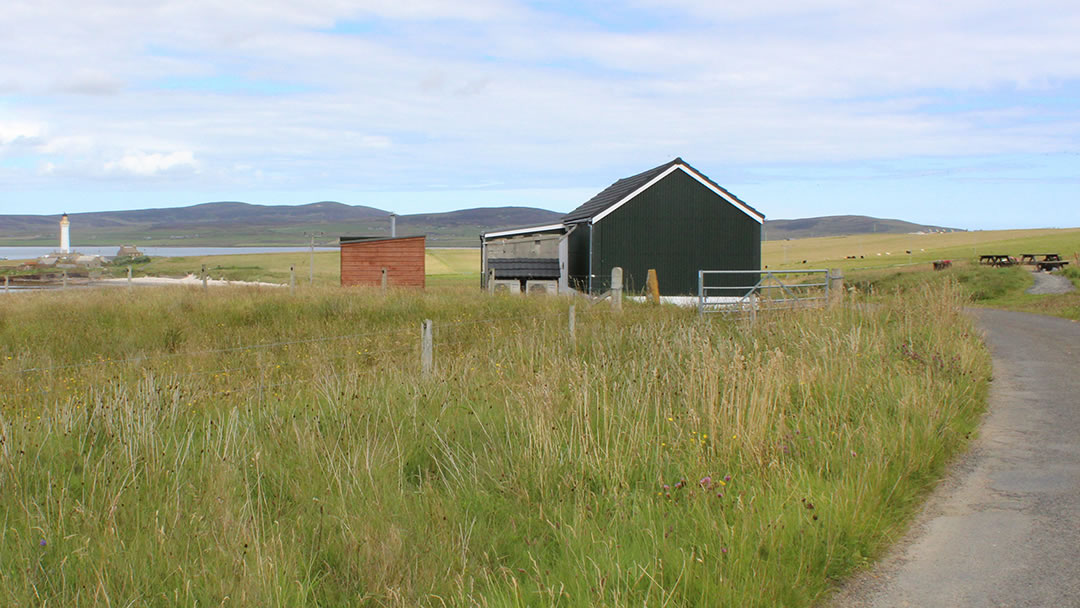
I found the small wood-lined Community Hall, a hut erected in 1934, from the First World War. The Graemsay Harvest Home held in here, I have been told, is a lively occasion indeed!
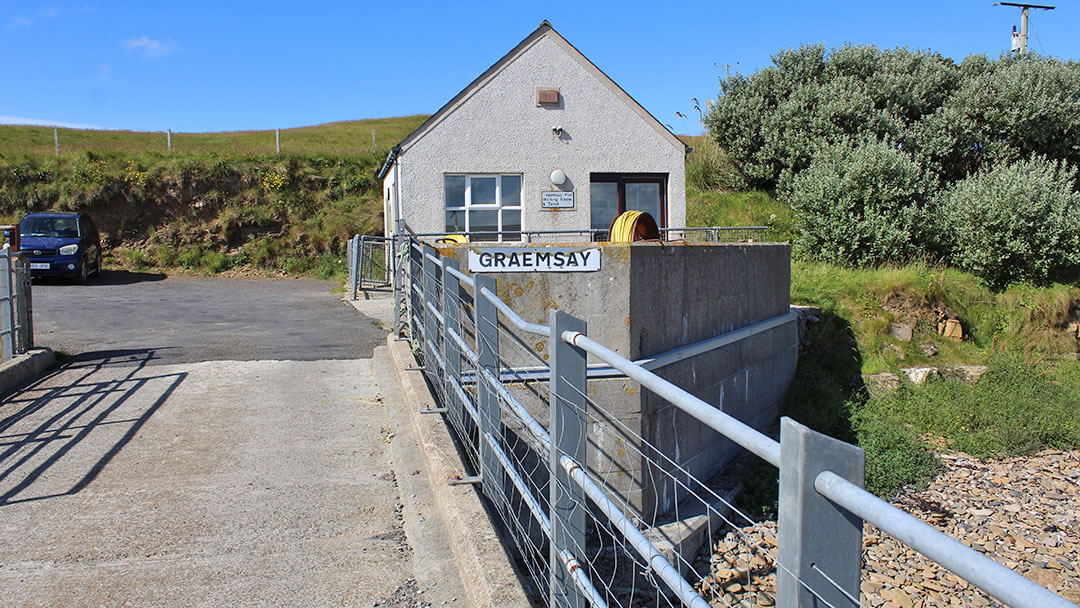
I entered the ferry waiting room at the end of my time in Graemsay. It is worth knowing that it is the only public toilet and shelter on the island. I discovered a box of cards and knits inside made by an enterprising islander. Though a tough choice, in the end, I bought a card featuring my wife’s favourite animal – an owl.
I boarded the ferry again, pleased to have discovered another secret and wonderful place. We hope you’ll take a trip over to Graemsay and discover the island’s peaceful charms for yourself!
 By Magnus Dixon
By Magnus DixonOrkney and Shetland enthusiast, family man, loves walks, likes animals, terrible at sports, dire taste in music, adores audiobooks and films, eats a little too much for his own good.
Pin it!
